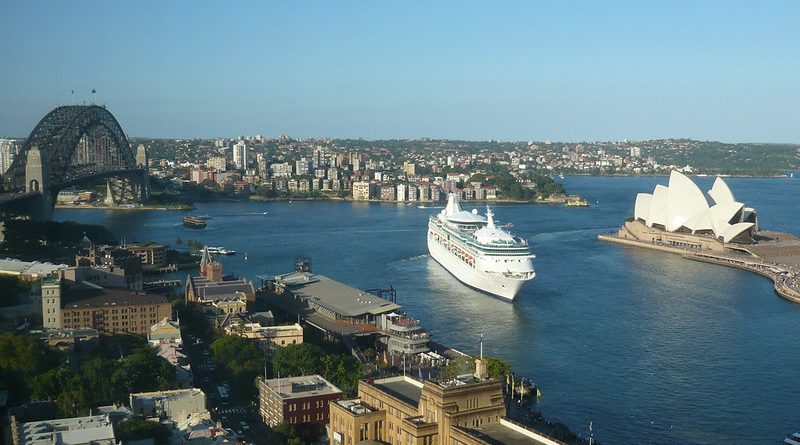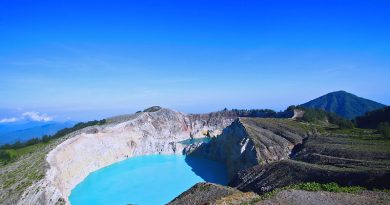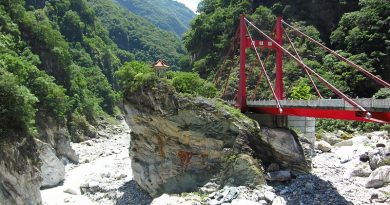Sydney City Guide
One of the most popular tourist destinations in Australia, Sydney remains a favourite with the Aussies themselves. 4.2 million people live in the Sydney area – two-thirds of the population of the state of New South Wales, and approximately one-fifth of the total population of Australia. 235 different nationalities have chosen to make Sydney their home, each contributing to the vibrancy and cultural diversity of this amazing city.
With overall living costs significantly lower than in most major European cities, Sydney offers the opportunity to live a full and varied lifestyle for less expense. Combining the hustle and bustle of city life with the relaxed holiday atmosphere of beach life, Sydney gives off an air of youthful exuberance that cannot help but appeal.
When to Visit
Sydney is one of those lucky cities that enjoy a reasonably temperate climate year round. Seasons fall exactly the opposite way around to Europe, with Christmas seeing the height of the summer climate. Temperatures tend to peak at around 30°C at this time, whilst in winter it rarely falls below 15°C.
Rainfall tends to be higher during the autumn and winter periods than in spring or summer. For this reason, peak periods for visiting the city tend to be in the spring months of October/November when temperatures are pleasantly warm and there is little rainfall. Having said that, Sydney is a popular destination over the Christmas/New Year period when the BBQs, fireworks and general festivities on the beaches are a sight to behold!
Sydney Opera House
Getting around
Most hotels and even some hostels in Sydney offer free transfers from the airport to their doors; or alternatively regular shuttle services at the terminal will drop you anywhere in the city for a small fee. Once there, Sydney’s buses, ferries, taxis and the ubiquitous CityRail ensure that getting around town is never a problem.
There are many pre-paid tickets available from ferry and train stations, offering unlimited travel on a variety of transport systems for 1-7 days. Alternatively, many tourist offices offer the option of the SeeSydneyCard, which for a higher fee combines unlimited transport options together with free entrance or discounts to a variety of tourist attractions and entertainments.
Accommodation
Sydney boasts a range of hotels, from the more basic Y on the Park Hotel near Hyde Park which offers dorm beds, to the swanky ANA Harbour Bank Hotel, which boasts a fitness centre and beauty salon, heated swimming pool, and of course perfect views of Sydney Harbour, including the Harbour Bridge and Opera House. Prices at the Y on the Park start at $32 AUS for a dorm bed and go up to $120 for a Family Room (both are peak season prices and include a light breakfast). The ANA start their peak rates at $337 for a single and go all the way up to $891 for a family room in the Deluxe Corner Suite on the Executive Floor over New Year.
Backpackers tend to head straight for King’s Cross, where a selection of budget hostels sit quite comfortably in-between 24 hour food and drink joints, offering a range of delicious cuisines at any time of day, and strip joints with such unforgettable names as The Pink Pussycat and of course Café au Lay.
One such hostel is the Funk House, run by travellers for travellers, which boasts bold psychedelic murals on the walls, a rooftop garden and BBQ area from which to survey the city, and a whole host of organised events to keep the guests entertained, from pub crawls to trips to the Blue Mountains. Peak prices start at $20 per dorm bed, or $19 with a VIP discount card, which is available at most hostels throughout Australia and New Zealand. Discounts are also available for those who book in for longer periods.
Backpackers wishing to avoid the sleazier aspects of King’s Cross might want to head further out to Glebe, where hostels such as Wattle House offer a more peaceful suburban retreat. Dorm beds here start at the slightly higher price of $25 per night.
Areas to visit in Sydney:
The Rocks
In 1788 the first cargo of convicts arrived in Sydney to form the first European settlement, which centred round the district known as The Rocks. While few traces of the early days are found here now, the area remains popular with tourists for its historical significance, not to mention its numerous picturesque cafes and expensive shops. The Colonial House Museum and Aboriginal & Tribal Art Centre offer educational and cultural opportunities in this part of town, or you can just find a spot to sit and enjoy the view.
Sydney Cove
Truly the hub of the city, Sydney Cove is the centre of the city’s transport system, and home to the two most famous sights of Sydney – theOpera House and Harbour Bridge. Harbour cruises are a delightful alternative to tour buses, especially the Aussie Duck cruise, which takes place on an amphibious craft that will both drive you across and sail you under the Harbour Bridge. Take in a concert, or maybe just a tour round the iconic Opera House; browse the nearby boutiques; dine in expensive restaurants, or simply sit yourself on the grassy area to the west of the harbour and drink in the sight of boats gliding through the glistening water with the white “sails” of the Opera House gleaming in the background.
Darling Harbour
An almost overwhelmingly fast-paced area of the city, Darling Harbour nonetheless merits careful exploring. Take a trip on the monorail for an overview of the area before deciding what to visit first. Various sculptures and works of art adorn the central area, while other artistic and scientific exhibitions and interactive displays await visitors to the acclaimed Powerhouse Museum nearby.
Sydney Aquarium offers an insight into – or perhaps a preview of – the abundance of exotic ocean wildlife to be found off the East Coast of Australia, while the Chinese Garden of Friendship, built for the Australian bicentennial celebrations, forms a little oasis of peace and serenity amidst the towering skyscrapers.
Things to See and do:
Sydney Harbour Bridge climb
440 feet high, the peak of the “old coat-hanger”, as it is affectionately termed by locals, offers unrivalled views across the harbour, for those brave enough to face the climb! For $130 AUS you can step into a safety “Bridgesuit”, strap yourself into a safety harness, and, after being breathalysed to make sure you’re not too unsteady after last night’s drinking, embark on the three and a half hour trip to the top of Sydney and back. Trips operate both day and night, and you are even offered the option of waiting for “dangerous conditions” for a truly adrenaline-fuelled journey!
Shopping
It is practically impossible to stay in Sydney and not go on a shopping spree. On George Street, the Queen Victoria Building, or QVB, is the best-known shopping mecca, where graceful domes and beautifully-designed stained glass windows enclose a wide variety of shops selling everything from jewellery to clothes, handicrafts to teddies with cork hats, and plenty of wine.
Elsewhere, Harbourside at Darling Harbour specialises in the latest fashion and gifts; theStrand Arcade is where exclusive designer brands meet young and funky wear from Sydney best young designers, while duty free addicts spend their time at the AMP Centrepointshopping area, easy to find courtesy of the distinctive needle tower that dominates the city skyline.
A free and easy atmosphere pervades the Sunday Tarpeian Market outside the Opera House, while those looking for better bargains and fewer tourists can hunt through the truly authenticPaddy’s Markets in the Haymarket area.
Oxford Street in the Eastern suburb of Paddington is the home of more young Australian designer fashion and is a shopping mecca/ place to see & be seen on a Saturday morning when Paddington markets are held near by. In fact, most of today’s young Aussie designers got started in the markets, holding a stall every Sat until their label was ‘discovered’ and became well-known. There’s also a thriving bar and cafe scene here.
Eating, drinking and partying
With so many nationalities in the city, the range of restaurants is naturally just as diverse and the food is delicious. French, Italian, Japanese, Thai, Vietnamese, Chinese, Indian, Greek – just about any world cuisine you can think of can be found here. King’s Cross is the place to be for late-night dining Asian-style, while those wishing to feast in more salubrious surroundings can head for Darling Harbour where over 50 chic restaurants offer some of the finest cuisine around.
The night doesn’t end with dinner either since, with 24 hour drinking well established in the city, Sydney’s nightlife just keeps on going. Pubs (often termed “hotels”), bars and clubs abound and the Sydneysiders party hard – possibly a reason for why there seem to be so many beer guts around! Venues range from Star City Casino, Sydney’s answer to Las Vegas, to Sublime, Sydney’s most popular venue for those who take their clubbing seriously. Irish bars abound, as they seem to in most cities worldwide, with The Hero of Waterloo near the Harbour Bridge offering perhaps the most traditionally Irish experience. Or, if you have the cash to flash, why not try the exclusive and expensive Cohibar based in Darling Harbour, which boasts a flamboyant cocktail lounge, a gaming room and a superb view across the city.
Nature
Think of nature in Sydney and you automatically think of the beach scene that dominates the New South Wales coastline. However, there are plenty of other areas in Sydney where skyscrapers do not hold the forefront of the view.
Established in 1816, the Royal Botanic Gardens in Sydney provides a beautiful and restful retreat from city life. With features such as the Tropical Centre, the Fernery and even a picturesque restaurant, the gardens attract a wide range of visitors including tourists, local joggers, picnickers and even T’ai Chi classes.
Often described as the best zoo in the world, Taronga Zoo is a short ferry ride away from the city centre. Situated in Taronga Park, the inhabitants include wombats, emus, elephants, zebras, penguins, and of course kangaroos. From the top of the park you have a beautiful view of Sydney Harbour and city centre.
Lane Cove National Park in Sydney’s northern suburbs offers a bush retreat and river right in the middle of suburbia. 83% of the park was burnt in the bushfires of 1994, but much regeneration work has been done since.
Aboriginal Sydney
Sydney may only be a couple of centuries old, but the native inhabitants of Australia have been here a lot longer. It seems inconceivable that Aboriginals were only recognised as Australian citizens in their own right as recently as 1967, but that is the sad truth. Much of their heritage has been destroyed, but the Aboriginals are trying to preserve what is left and tell visitors to Sydney their own story.
The Aboriginal and Tribal Art Centre in The Rocks is a good place to get a feel for Aboriginal style and design, while venues such as the New South Wales Art Gallery and the Sydney Museum offer several interesting Aboriginal exhibitions. For a more comprehensive experience of Aboriginal culture, however, book a tour with Sydney Aboriginal Discoveries, the first company to offer visitors to the city an insight into Aboriginal life both before and after European settlement.
MORE INFORMATION
Sydney Visitor Centre
The official website of Sydney’s central tourist information centre.
Living Harbour
Part of the Australian Museum online, for an interesting introduction to Aboriginal Sydney.
The Sydney Funk House
The official website of this unique Sydney hostel which outlines the various trips and deals available to guests.
Wattle House
For detailed rates and pictures of this cosy accommodation out of town.
The Rocks Chamber of Commerce
For further details on the historic Rocks area of Sydney.
Sydney Opera House
For the official guide to what’s on at the Opera House.
Official Darling Harbour Website
Further details on the attractions and events in this part of town.
BridgeClimb™
Book your trip climbing the Harbour Bridge.
NightOut
For a comprehensive guide to Sydney’s nightlife.
by Rowena Forbes




